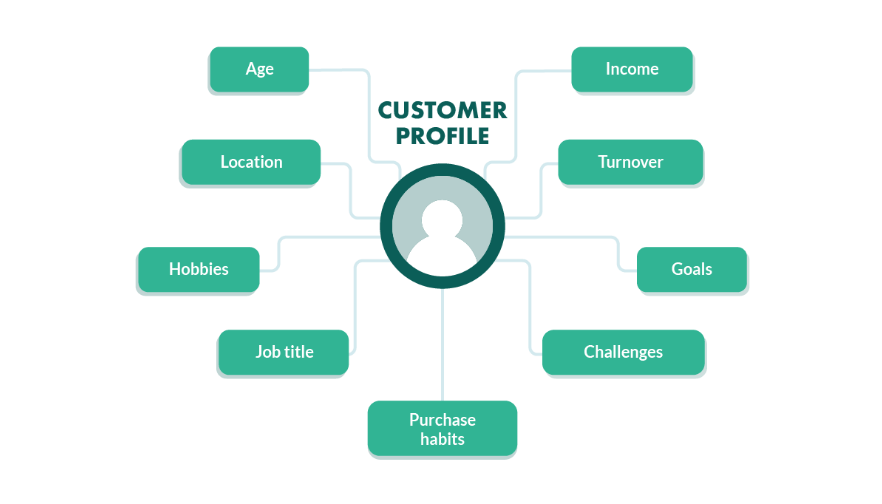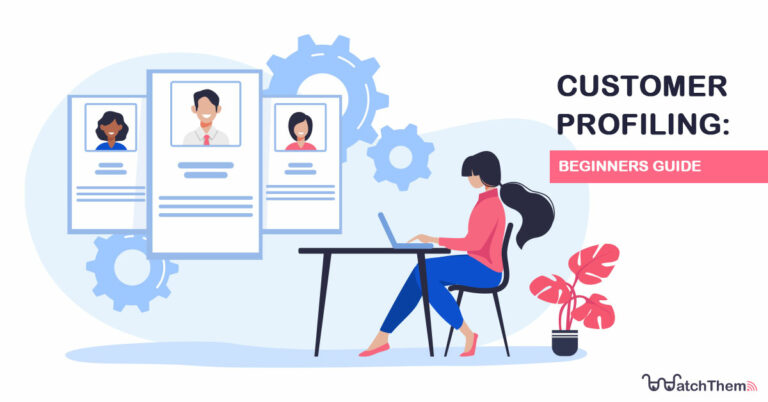Page Contents
Have you ever asked yourself why all of your efforts aren’t paying off as they should? Efforts to make the most out of your leads and their conversions process. Maybe it’s time to redirect your attention to the right customers by knowing them better or as it is known customer profiling. If the leads that are coming into your sales pipeline don’t fit there, it doesn’t matter how much force or marketing technique you use on them. They won’t buy from you because they are not the right customers. This is exactly the core purpose of customer profiling. In this scenario, you get to know your buyers, and their behaviors instead of using one sale method on all of your leads, you can personalize them and get the best outcomes naturally.
Here, I try to explain exactly what customer profiling is and why it is important for your business and how to make it.
Customer Behavior and the Psychology behind it
![]()
![]()
What Exactly is Customer Profiling?
Customer profiling or consumer profiling is detailed information about your current customers. It can be about their physical locations, their psychological traits, or even as simple as what is their favorite color. I will group them later, but here the more important thing is knowing the difference between customer profiling and buyer persona. They may seem the same at first glance, but they’re not.
Customer profiling is about the current pool of your customers, the customers that you have. But buyer persona, well that’s an imaginary thing. There is no customer yet, you try to foresee their needs and make decisions according to them. So, it’s obvious that customer profiling is more precious and can help you more.
Why is Customer Profiling Important?
When your sales team tries to draw a path or you want to make some marketing decisions for the incoming future, it’s crucial to know where you are leading. customer profiles act just like guard rails for your product managers and will keep them in the right direction.
Trying to solve all of your market needs seems like boiling the ocean. It’s just impossible to do something like that. You need to work on a small portion of your market and try to know your customers. This article can help you in this part if you don’t know where to start.


Types of Customer Profiling
Trying to group your customers into some segments will help you target them in the right and customized way. So, here I name some of the most known segments that can group your customers.
1. Demographic
Demographics are the concrete characteristics of a customer and can be used to understand consumer behavior. Some of its traits are:
- Age
- Sex
- Income
- Job title
- Education
2. Psychographic
Each person’s psychological needs play an important part in their decision-making. So, knowing them will help a lot:
- Goals
- Pains
- Lifestyle
- Habits
- Values
Whether it’s for understanding the triggering events that lead them to purchase or crafting value-based messaging to attract prospects psychographics are extremely useful aspects to be considered.
3. Behavioral
Behavioral segmenting is about how their psychology affects the actions of customers:
- Customer engagement
- Product usage
- Loyalty
- Purchase history
Customer support team segments based on behavioral features are among the most useful customer profiling methods. They can assist service teams in discovering customer interaction trends and how these trends translate into recurring revenue and customer satisfaction. These things can be improved once they’ve been measured.
4. Geographic
This is the part where we will consider where your customers are from and what their cultures are like, and so on:
- City
- Country
- Region
- Area
It may seem that this is not as important as the other grouping factors. Bin some cases, the difference it makes is so huge that we must consider it in our customer profiling.
How to Create a Customer Profile
It’s correct that we gathered lots of information and traits about your customers. Though, it shouldn’t give us the fake sense of righteousness. Because we always should expect an unusual trait and behavior from our customers that need a specific reaction.
Here I try to name the steps that usually is enough for making a customer profile and managing your customers:
1. Analyze your analytics
If you are a user of our WatchThemLive analytics services you already know that this service provides so much precious information about your audience and customer that you can use them to make a profile for each customer according to their actions and feedbacks that they provide you.
Just start by looking at basic details, such as:
- Age: What age range do most customers fall within?
- Gender: Is the percentage evenly split, or does one gender from the majority?
- Location: What city, state, country or continent are they in?
- Device: Do most people visit your site on mobile or desktop?
2. Talk to your Sales team about customer profiling
Your sales team is the ones that are directly in touch with your customers and know each of them. So, it makes sense for you to consider their opinions on each customer they are working with and make sure to use them in your customer profiling process.
For example: Do your sales team often spend time answering questions like “when will our first payment be taken”? Chances are, many of your future customers will be struggling with the same thing: Upfront payment.
You can be aware of this when nurturing future leads by including their concerns under the “challenges” section of your customer profile.
3. Review your customer journey map
A customer journey map is a document that shows us every touchpoint a customer must pass through to achieve a goal with your company. These may be time-consuming to create so just keep them in mind and for creating your customer’s profile. Because the customer journey map’s most important job is showing you how your customers interact with your usual buying process. Thus, it will give you important information about them.
4. Each feedback Helps your customer profiling
When building your profile, it’s easy to just rely on the data your team is given. But, it’s hard to get to know your customers if you don’t spend time with them. You need to meet your customers if you want to have a clear picture of what they’re like. This makes customer interviews one of the best resources to use when building a customer profile.
Customer interviews allow your team to speak with users face-to-face. They can read their reactions to questions in real-time and foster human relationships with your customers. This helps them uncover valuable information that raw data simply can’t show.
5. Understand your market
Knowing your market and the companies that you are competing with can give you valuable information about the customers that are interested in this market and business and show you some of the traits that they have. This will help you to build and complete your customer profile-making process.
6. Rinse and Repeat
Don’t forget that you don’t have to group everything you uncover into a single client profile before you start building your profiles.
It’s critical to keep your buyer personas as specific as possible.
You can do this by identifying similar qualities among numerous target clients and categorizing them where appropriate. If something doesn’t fit (but the data is still important), a new profile should be created.
In the End
Customer profiling is a way to create a portrait of your customers to help you make design decisions concerning your service. Here I tried to explain the basics and important things you and your company need to make your customer’s profile. You can use them to decrease the time and money wasted on the wrong persons.

